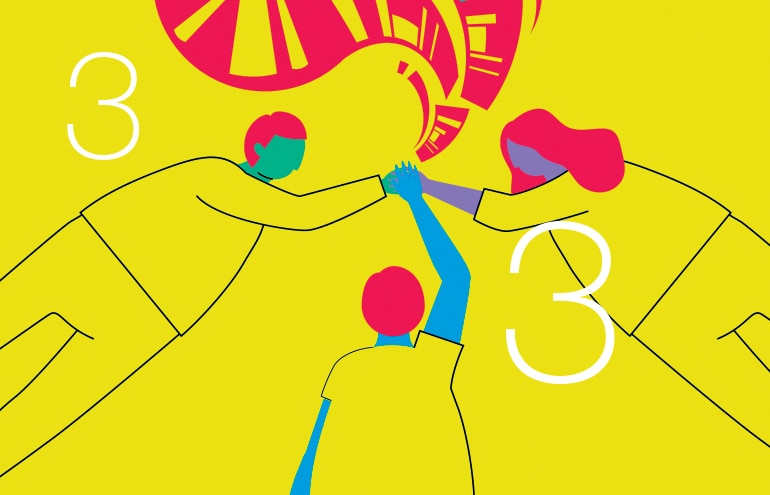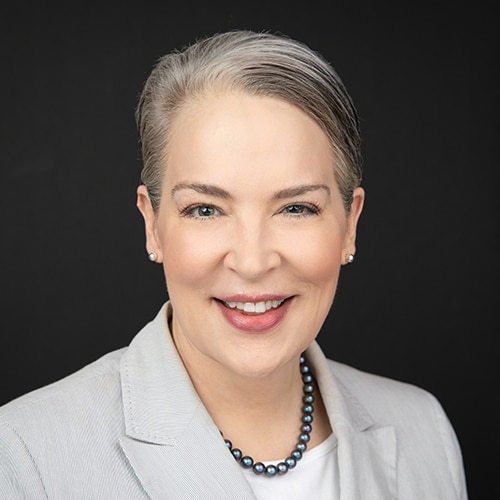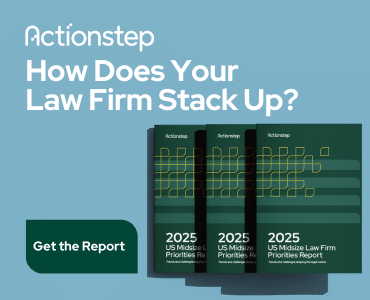Law firm diversity and inclusion: Three new ways to Increase diversity in law firms and legal departments.
A recent study found an overall culture of implicit gender bias in major law firms, which often unconsciously extends to other diverse lawyers and employees in law firms and legal departments. The study’s authors called for urgent remediation, stating “we are way past the point when mere lip service to the goal of equality in the legal profession will suffice.”
In recent years, many law firms and legal departments have made significant investments to level the playing field, improve their diversity and culture of inclusion, and decrease gender bias. However, firms and legal departments can be doing more to measurably increase diversity. Here are three new ways to increase law firm diversity.
1. Include the Entire Ecosystem
In conjunction with efforts to increase diversity and inclusion in their lawyer ranks, firms and departments could start to tally in their formal diversity tracking, reporting and scorecards in-house business and professional staff who are not licensed or practicing lawyers, as well as external vendors, businesses and contractors that are certified minority or women-owned entities.
Why? Because legal talent does not consist of lawyers alone. Law firms and legal departments rely heavily on other qualified in-house professionals. These professionals serve in areas such as legal operations, administration, human resources, information technology, client service, marketing, business development and other critical business functions. But many practicing lawyers tend to unconsciously minimize or dismiss those who are not licensed or practicing lawyers. This is unfortunate because, without them, the operations in many law firms and legal departments would quickly grind to a halt.
Similarly, almost all firms and departments use external vendors regularly for a variety of projects and tasks — including staffing, IT support, training and coaching, and as expert witnesses. Many of these vendors are certified minority- or women-owned entities, yet most law firms do not track their use of minority or diverse external providers. (Many corporate legal departments do.) Perhaps it’s time to consider adding them to the firm’s diversity scorecard.
So ask yourself whether diverse professional and business staff hires and current business and allied legal professionals count as diverse hires in your law firm or legal department and are tallied in the firm’s or department’s diversity scorecards.
2. Increase Commitment to Diversity in Your Workforce
Twenty years ago, in 1999, chief legal officers of about 500 major corporations signed the “Diversity in the Workplace” (aka the “Call to Action”) commitment. It was designed to encourage law firms to assign more work and leadership roles to diverse lawyers, and many corporations created a diverse set-aside for outside legal work to be sent to diverse lawyers and firms. Did it make an impact? Certainly some. But, because there was no overall, formally organized tracking of the total efforts in aggregate, the results were not as strong as they could have been.
Two recent professionally organized and managed diversity initiatives are already making a measurable difference in the actual diversity within law firms and corporate legal departments. Yet not all law firms or legal departments have signed on or committed to them. If yours has not yet committed to the Mansfield Rule or signed on to the Move the Needle Fund collective projects, consider doing so.
Diversity Lab, founded and led by Caren Ulrich Stacy, created and launched these two major diversity initiatives:
The Mansfield Rule
More than 100 major law firms have committed to adopting the Mansfield Rule. The rule requires the firm to measure whether at least 30% women, attorneys of color, LGBTQ+ individuals, and lawyers with disabilities have been considered for leadership and governance roles, equity partner promotions, formal client pitch opportunities, and senior lateral positions. Lisa Kirby, Diversity Lab’s Chief Business Intelligence & Knowledge Sharing Officer, leads the Mansfield Rule effort. Of the results so far, she said: “We’re so thrilled to see that two years into this initiative, the forward-thinking law firms participating in the Mansfield Rule have already reported some significant cultural changes as well as meaningful results. For example, 65% of participating firms promoted a higher percentage of diverse lawyers into the equity partnership, and 79% of participating firms reported that their lateral partner hiring pool was more diverse following the adoption of the Mansfield Rule.”
Also, more than 20 corporate legal departments have signed on and committed to applying the Mansfield Rule to their department’s operations. These legal departments are asked to consider at least 50% historically underrepresented lawyers for 70% or more of the leadership roles and activities identified below:
- External hiring and/or promotions for top roles (e.g., GC, CLO)
- External hiring, internal transitions, and/or promotions to senior-tier management (e.g., reporting to GC, assistant GC, deputy GC, head of compliance, legal operations chief)
- External hiring, internal transitions, and/or promotions to mid-tier management (e.g., reporting to senior-tier managers)
- External hiring, internal transitions, and/or promotions to other lawyer positions
- Hiring for interns or temporary lawyer positions (e.g., law clerks, summer 1Ls, secondments)
- Discretionary high-visibility opportunities (i.e., not tied to a particular role or position) that provide skills building and exposure to internal and external business leaders
- Written and transparent job responsibilities for senior and mid-tier management roles
- Written and transparent processes for advancement opportunities and promotions within the legal department
- Engaging outside counsel for new matters (i.e., lead or primary team members)
- Changing or expanding outside counsel representation (i.e., lead or primary team members)
The Move the Needle Fund (MTN)
Launched in September 2019, MTN is a collaborative effort of four founding law firms — Eversheds Sutherland (US), Goodwin, Orrick, and Stoel Rives — and a fifth, to be chosen soon through a blind selection process. Through the fund, the firms will work on:
- Together, investing more than $5 million in diversity efforts over five years
- Setting aggressive, public firm-specific diversity goals
- Experimenting with innovative methods to achieve them
- Measuring the outcomes
- Sharing the results — including successes and failures — with one another and the community
To achieve these goals and to serve as a model from which others can learn, MTN will leverage the $5 million investment to:
- Experiment with new approaches to hiring, work-life integration, work allocation, sponsorships, promotions, feedback, performance reviews and compensation systems
- Implement the Diversity in Law Hackathon ideas
- Test evidence-based research such as the bias interrupters from the American Bar Association and the Minority Corporate Counsel Association study, as well as other inclusion research from top academic institutions
- Crowdsource innovative ideas from other industries
Since its launch, over 25 GC and CLOs have joined MTN and committed to requiring their potential and current outside counsel firms to consistently and progressively staff matters with diverse teams and lead lawyers. As Caren Ulrich Stacy stated, “The MTN effort combines the four critical elements that research has shown will create and sustain transformational change — collaboration, transparency, measurement and accountability.”
3. Hire a Dedicated Diversity Developer
One major law firm is hiring a full-time, in-house “diversity developer,” a new client-facing position being filled by a seasoned non-practicing lawyer. This role will be dedicated to providing support and coaching to help the firm’s diverse lawyers develop client and referral source relationships and enhance client service. The diversity developer’s job is to help lawyers implement their annual plans and goals, identify appropriate opportunities for new work and new clients, vet those opportunities, prepare and participate in proposals for new work, manage follow-up and engage in related activities.
A lot still needs to be done to meaningfully increase diversity and decrease gender disparity in law. The initiatives described here will likely help, but every law firm, legal department, lawyer, vendor, and legal industry organization needs to make consistent and out-of-the-box efforts over time to measurably increase diversity.

















